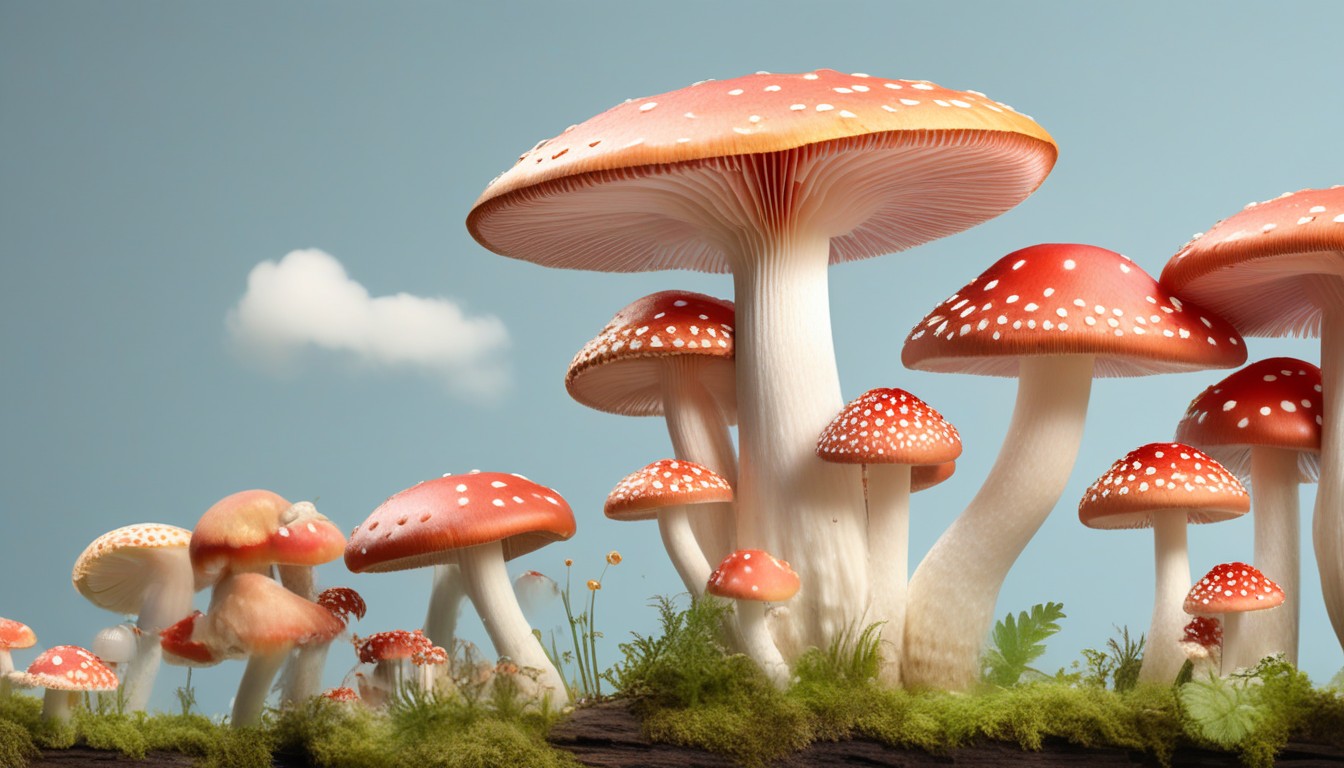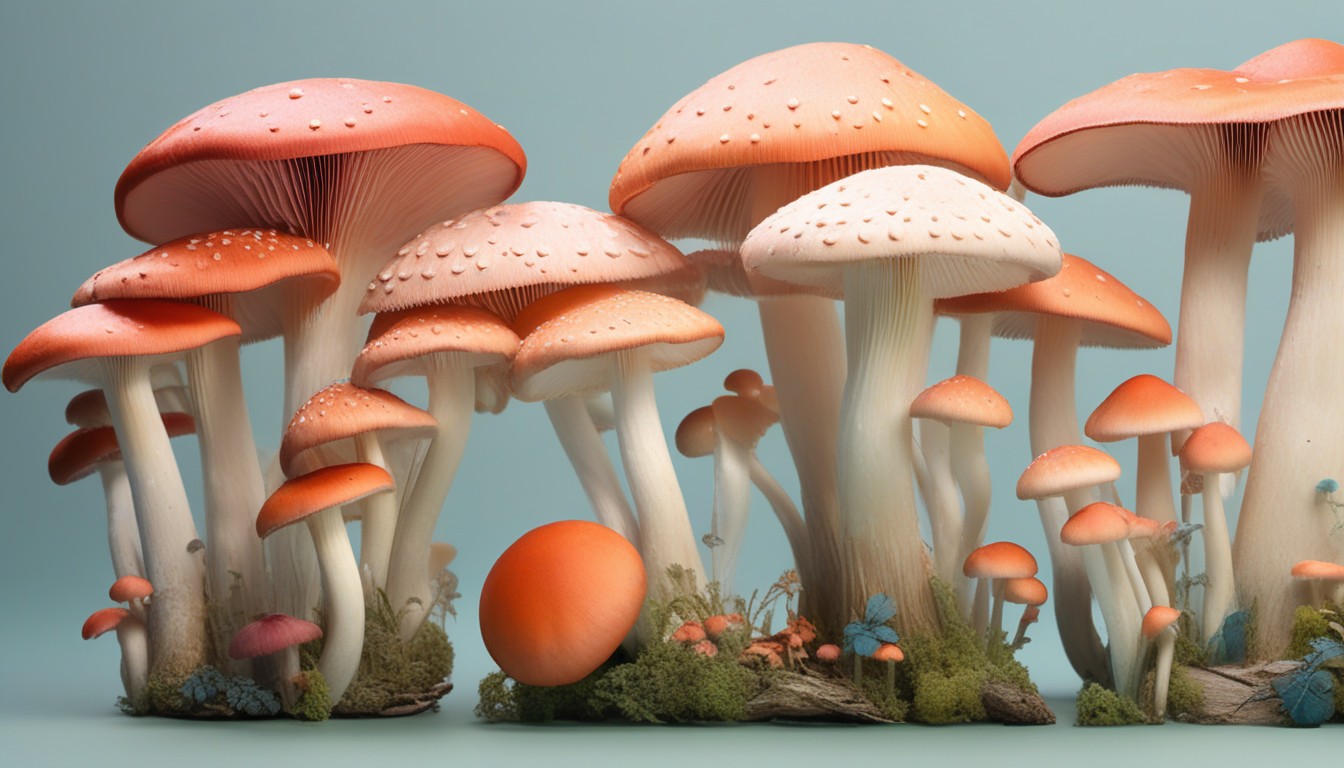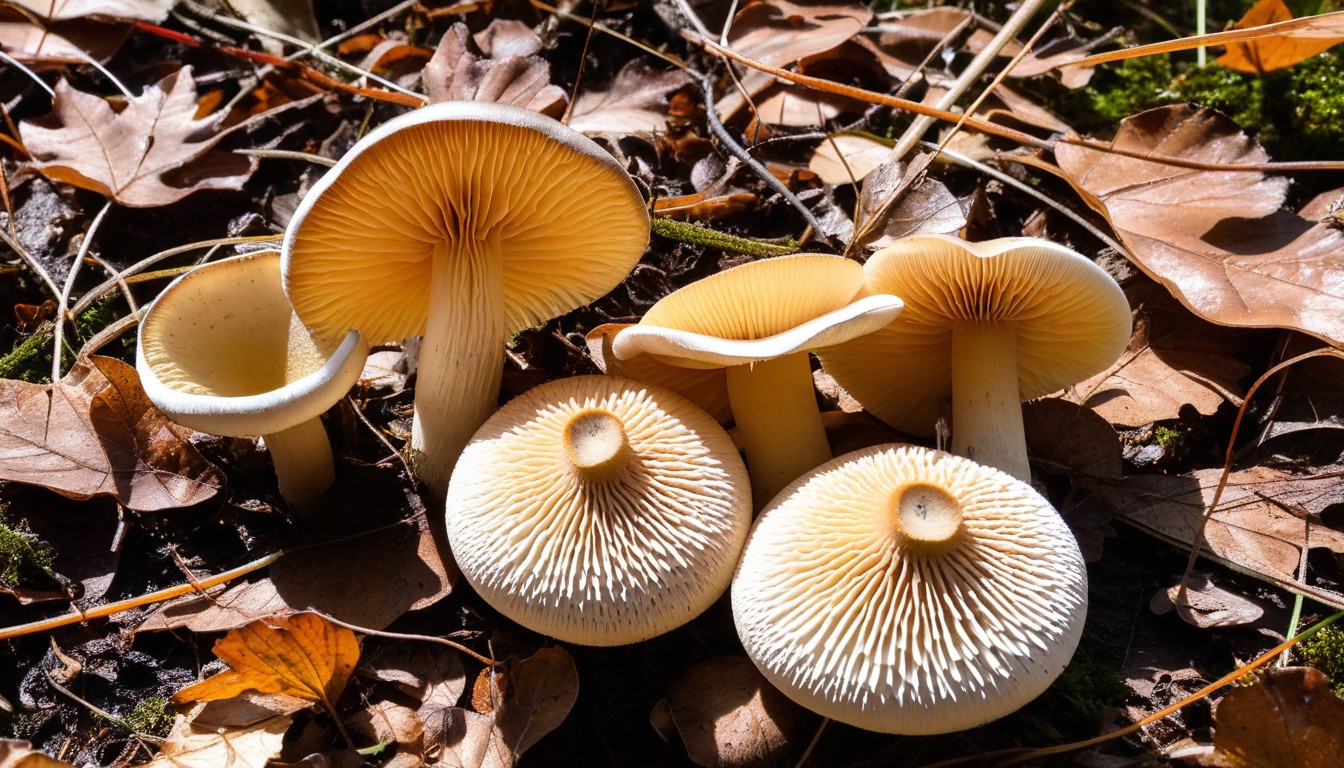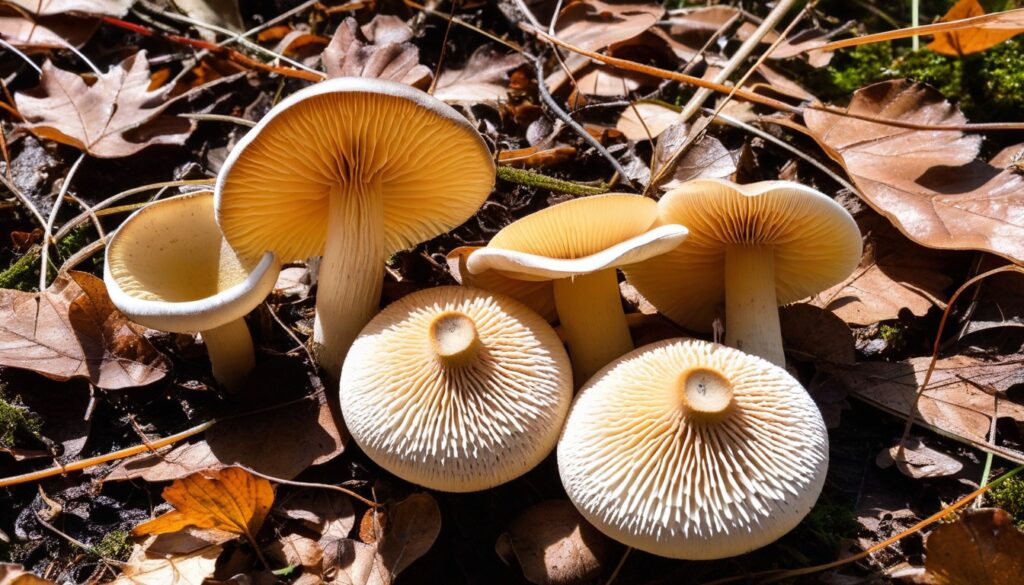Mushroom cultivation requires careful attention to detail, and one factor that can make a significant difference in your yields is fresh air exchange. Proper air circulation is essential for promoting robust mushroom growth, ensuring ample oxygen levels, and removing excess carbon dioxide.
In this section, we’ll dive into why fresh air exchange plays a vital role in successful mushroom cultivation. We’ll also explore the optimal techniques to ensure your mushrooms thrive, and discuss common mistakes to avoid.
Key Takeaways:
- Fresh air exchange is crucial for successful mushroom cultivation
- Proper air circulation ensures ample oxygen and carbon dioxide removal
- Optimal techniques and diligent monitoring can create the ideal environment for mushroom growth
Understanding the Role of Fresh Air Exchange
Having a proper fresh air exchange system is crucial for obtaining robust mushroom growth. In fact, fresh air exchange is one of the most important aspects to consider when growing mushrooms.
The exchange of fresh air allows CO2 to escape and oxygen to enter the growing environment, providing the essential elements that mushrooms need to thrive. Without proper air circulation, the humidity levels can rise, causing moisture buildup, which is conducive to bacterial and mold growth, leading to contaminations.
Did you know: Good fresh air exchange is essential to produce high fruiting body yields and good mushroom quality.
To create an optimal environment for your mushrooms to grow, it’s important to understand the role of fresh air exchange in their development. By promoting a healthy growing environment, you can prevent mushroom contaminate and allow your crops to flourish.
Importance of Ventilation in Mushroom Cultivation
To achieve optimal mushroom growth, proper ventilation is critical. Without adequate ventilation, your mushroom cultivation area can become a breeding ground for harmful contaminants that can stunt growth or even cause your crop to perish.
When we talk about ventilation, we are referring to the movement of fresh air into and out of your mushroom cultivation area. This movement helps to maintain the ideal balance of oxygen and carbon dioxide that is required for optimal mushroom growth.
It’s important to note that the exact ventilation requirements for your mushroom cultivation area may vary based on factors such as the size of your growing space, the number of mushrooms you’re cultivating, and the environmental conditions of your location. However, regardless of these factors, proper ventilation is essential to providing your mushrooms with the best chance of success.
By ensuring that there is a proper exchange of fresh air in your mushroom growing space, you will help maintain the ideal environment for mushroom growth and promote a healthy, bountiful crop.
Natural Ventilation vs. Mechanical Ventilation
Two primary methods for fresh air exchange in mushroom cultivation are natural and mechanical ventilation. Understanding the pros and cons of each can help you choose the best option for your growing space.
Natural Ventilation
Natural ventilation refers to the exchange of air that occurs through open doors or windows, or through vents located in your growing space. One significant advantage of natural ventilation is that it is free and requires no electricity. The air is also generally more humid than mechanically ventilated air, which can benefit the growth of some mushroom species.
The downside of natural ventilation is that it can be challenging to control the airflow, which may lead to inconsistent growing conditions. Natural ventilation also provides less control over temperature and humidity levels, which can lead to problems in maintaining optimal conditions for mushroom growth.
Mechanical Ventilation
Mechanical ventilation relies on equipment such as fans and ducts to create fresh air exchange. One significant advantage of mechanical ventilation is that it provides greater control over airflow, temperature, and humidity, allowing for more consistent growing conditions. This method is particularly useful for commercial growers who need to maintain specific conditions for large-scale mushroom production.
The downside of mechanical ventilation is that it requires electricity to operate, which can increase energy costs. The air moved by the fans may also be drier than naturally ventilated air, which may not be ideal for all mushroom species.
|
Natural Ventilation |
Mechanical Ventilation |
|---|---|
|
Free and requires no electricity |
Requires electricity to operate |
|
Air is generally more humid |
Air may be drier |
|
Challenging to control airflow |
Greater control over airflow and conditions |
Overall, the choice of natural or mechanical ventilation will depend on factors such as your growing space, the species of mushroom you are cultivating, and your budget. In some cases, a combination of natural and mechanical ventilation may provide the best solution for optimal fresh air exchange.
Creating the Perfect Fresh Air Exchange System

In order to achieve optimal mushroom growth, a fresh air exchange system that maintains the right environment is crucial. There are various components, equipment, and setups required for creating the ideal airflow that facilitates effective mushroom cultivation.
Components of a Fresh Air Exchange System
- Ventilation Equipment: This includes fans and vents that help in regulating air exchange.
- Air Filters: These remove any pollutants or contaminants that may hinder growth.
- Humidifiers: These devices help in maintaining suitable humidity levels based on mushroom species.
- CO2 Sensors: These sensors monitor CO2 levels and regulate air exchange to balance oxygen and CO2 levels.
Equipment for a Fresh Air Exchange System

There are various equipment options for creating optimal fresh air exchange in your mushroom cultivation space. The most commonly used equipment includes:
|
Equipment |
Function |
|---|---|
|
Air exchange fan |
Regulate fresh air intake and stale air excretion. |
|
Inline fan |
Extract hot and stale air. |
|
Intake fan |
Adjust the intake of fresh air. |
Setups for Fresh Air Exchange System
Two common setups for fresh air exchange systems are:
- Closed-Loop: This system recirculates the air inside the cultivation area without introducing any fresh air from the outside. CO2 levels are monitored using CO2 sensors, and fresh air is introduced occasionally to maintain optimal levels.
- Open-Loop: This system introduces fresh air from the outside to maintain optimal oxygen levels while exhaust vents expel stale air outside the growing space. It’s important to regulate the amount of fresh air introduced to avoid fluctuations in temperature and humidity.
Overall, creating an optimal fresh air exchange system is vital to promoting robust mushroom growth. Take the time to research and implement the right components, equipment, and setups that fit your space and chosen mushroom species.
Monitoring and Adjusting Fresh Air Exchange Levels
Keeping a close eye on the fresh air exchange levels is critical to ensure optimal mushroom growth. Here’s how to monitor and adjust the airflow to achieve the perfect conditions:
- Assess the airflow: Regularly check the ventilation system and make sure there are no obstructions or blockages. Use an anemometer to measure the airspeed and ensure the airflow is continuous and consistent.
- Monitor the CO2 levels: High levels of carbon dioxide can hinder mushroom growth. Install a CO2 meter to monitor CO2 levels and adjust airflow accordingly.
- Adjust the ventilation: If CO2 levels are high, increase the airflow to bring down the CO2 levels. If CO2 levels are low, decrease the airflow to retain optimal CO2 levels for healthy mushroom growth.
- Document adjustments: Keep a record of any adjustments you make to the airflow and CO2 levels. This will help you identify patterns in mushroom growth and make more informed adjustments in the future.
By regularly monitoring and adjusting the fresh air exchange levels, you can create the ideal environment for your mushrooms to thrive.
Common Mistakes to Avoid in Fresh Air Exchange

Fresh air exchange is a crucial factor for healthy mushroom cultivation, but there are common mistakes that growers may commit and harm their crops. Here are some errors to look out for:
|
Error |
Effect on cultivation |
Solution |
|---|---|---|
|
Insufficient airflow |
Inadequate oxygen supply, leading to slow and stunted growth |
Check and adjust ventilation settings, consider additional ventilation equipment if necessary |
|
Overpowering airflow |
Dry and arid environment, increasing risk of contamination |
Reduce the ventilation setting and monitor humidity levels |
|
Not changing air filters |
Reduced ventilation efficiency, build-up of contaminants |
Regularly clean or replace air filters according to the manufacturer’s recommendations |
By avoiding these and other common errors, you can maintain an optimal fresh air exchange system and promote healthy mushroom growth.
Troubleshooting Fresh Air Exchange Challenges

Even with the best efforts to create an optimal fresh air exchange system, ventilation issues may still arise. In this section, we’ll cover some common challenges and provide solutions to overcome them.
Problem: Insufficient Fresh Air
If your mushrooms are not receiving enough fresh air, their growth may be stunted and their quality may suffer. To troubleshoot this issue, check that your ventilation system is properly sized for the size of your growing space. It may be necessary to install additional fans or ducting to increase airflow. Additionally, make sure that the vents and openings are clear of any obstructions that may be limiting the flow of fresh air.
Problem: High Humidity
High humidity can lead to excess moisture in your growing space, which can promote the growth of harmful bacteria and fungi and even cause your mushrooms to rot. To combat high humidity, consider installing a dehumidifier or adding additional ventilation to help circulate and dry out the air. You can also try reducing the amount of water you use when misting your mushrooms or adjust the timing and frequency of misting to prevent excess moisture buildup.
Problem: Poor Air Quality
If you notice an unpleasant odor or other signs of poor air quality in your growing space, it may be due to inadequate fresh air exchange. To address this problem, check your ventilation system to ensure that it is removing stale air and supplying fresh air to your mushrooms. You may need to clean or replace any air filters or install additional filtration systems if your space is particularly prone to poor air quality.
Note: In cases of persistent ventilation issues, it may be helpful to consult with a professional or experienced grower to identify and address underlying problems.
Conclusion
In conclusion, proper fresh air exchange is essential for healthy and robust mushroom growth. By understanding the role of ventilation in promoting ideal growing conditions, you can create an environment that optimizes your mushrooms’ growth potential. Remember to choose the right ventilation system for your needs, monitor and adjust airflow levels as necessary, and avoid common mistakes that can hinder your mushroom’s development.
With these techniques and strategies in mind, you’ll be well on your way to cultivating a bountiful mushroom harvest. Happy growing!
FAQ
Why is fresh air exchange important for healthy mushroom growth?
Fresh air exchange is crucial for providing mushrooms with the necessary oxygen they need for growth. It helps remove stagnant air and control humidity levels, preventing the development of mold and other contaminants.
What role does ventilation play in mushroom cultivation?
Ventilation plays a vital role in maintaining the balance of oxygen and carbon dioxide levels in your mushroom growing space. It ensures that mushrooms receive an adequate supply of fresh air while removing excess carbon dioxide and moisture.
What are the differences between natural ventilation and mechanical ventilation?
Natural ventilation relies on natural airflow and openings in the cultivation area, while mechanical ventilation utilizes fans and other equipment to control air movement. Natural ventilation is more cost-effective but may be less precise, while mechanical ventilation provides better control over airflow.
How can I create an optimal fresh air exchange system for my mushrooms?
To create the perfect fresh air exchange system, you will need to consider factors like air intake, exhaust, and circulation. This may involve installing fans and vents, creating air pathways, and ensuring proper filtration to maintain clean air within the growing area.
Why is monitoring and adjusting fresh air exchange levels important?
Monitoring and adjusting fresh air exchange levels allow you to maintain optimal growing conditions for your mushrooms. By regularly assessing airflow, you can make necessary adjustments to ensure that the CO2, oxygen, and humidity levels are within the ideal range.
What are some common mistakes to avoid in fresh air exchange?
Some common mistakes in fresh air exchange include inadequate ventilation, improper temperature control, and neglecting to address airflow restrictions. It’s important to ensure proper ventilation is in place and regularly check for any issues that may hinder optimal mushroom growth.
How can I troubleshoot fresh air exchange challenges?
If you encounter challenges with your fresh air exchange system, you can start by checking for any obstructions, adjusting fan speeds, or evaluating the overall setup. It’s also important to ensure that filters and vents are clean and functioning properly.

